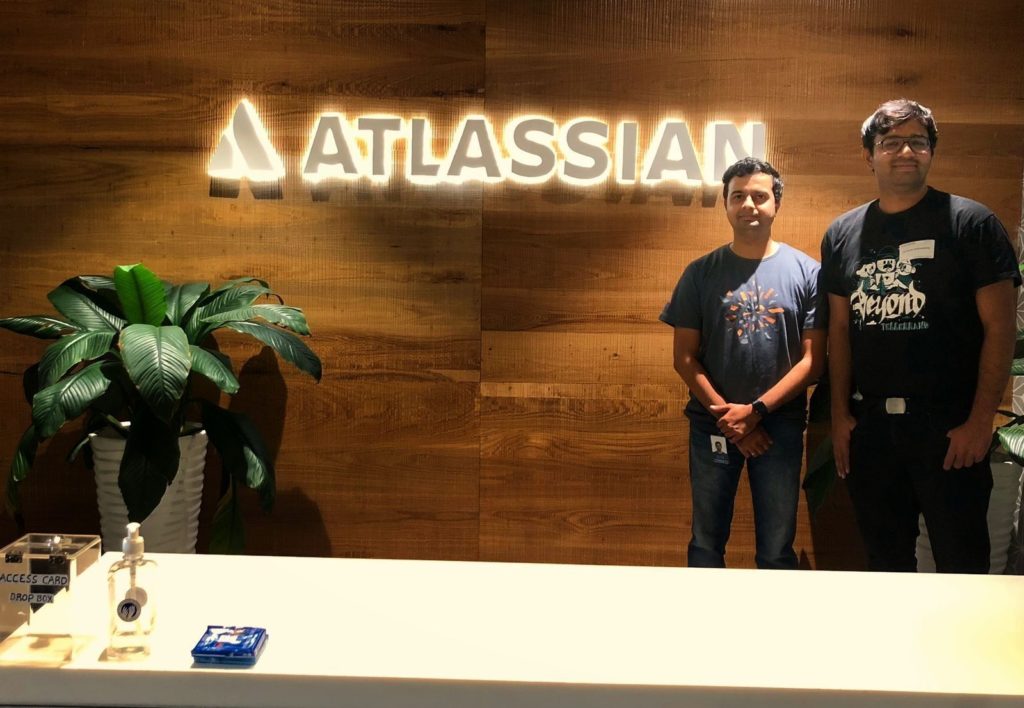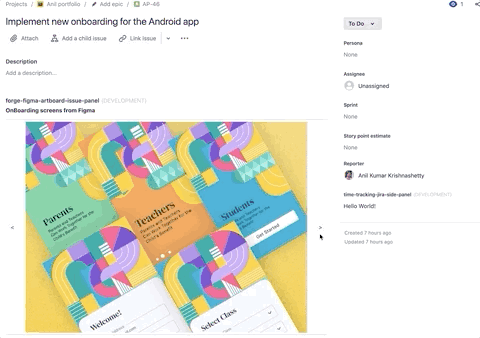Forge is our new cloud app development platform – now, developers can build trusted, scalable apps in minutes without the need to manage infrastructure or security. Forge is currently available in beta for customers building in-house apps and integrations for their teams.
I had the opportunity to sit down with Anil Kumar Krisnashetty, IT Consultant at bitgrip GmbH, and learn more about his experience improving day-to-day workflows by building Forge apps.
How did you learn about Forge?
During my recent visit to Atlassian's Bengaluru office, I met Atlassian developer Manjunath Basaluru Srinivasa. We had a great conversation about the agile framework and issues I've faced with Jira cloud marketplace apps. That's when he suggested that I try out Forge – a new, easier way to build cloud apps. With my 10+ years experience in frontend web development and passion for APIs and serverless platforms, this was music to my ears. I received access to the beta in a few days and was on my way.

Tell me about your experience with Forge.
I started by creating a hello world macro app for Confluence and got it up-and-running in just a few minutes. The easy, step-by-step instructions in the documentation are helpful in getting a quick start. Plus, the beta gives you access to an active Forge Slack workspace, where the Forge team provides quick responses to any questions I have. I was also able to rely on a few videos from Atlas Camp 2019, which helped me understand the overall Forge architecture.
A React-style declarative UI, access to data through APIs and the execution of your business logic on a Functions-as-a-Service (FaaS) platform; Forge lets you build more with less.
With a set of Forge UI components and useful sample starter apps, I was able to see my ideas in action in less than five minutes. The Forge tunnel lets the user build apps locally and see the results instantly. The platform also takes care of infrastructure and security, enabling more time to focus on business logic, and less time on infrastructure.
Here's an example of what I mean:

What have you built on Forge so far?
Render Figma assets on Confluence
This app renders your Figma design assets on a Confluence page. Check out the .README file for more information. You can also duplicate the Figma file and use this Bitbucket project to get started.
Create Jira issues from WhatsApp
WhatsApp is a widely used app, which made me think, "what if we could create a Jira issue in WhatsApp?" This app assigns issue type automatically based on the text description received in WhatsApp. I've used Twilio to send and receive messages from Whatsapp, Forge webhooks to receive the Whatsapp message, and Algolia to determine whether or not the WhatsApp message is a bug.
Automate test reports on Confluence
Use a Confluence page as the single source of truth for your application's end-to-end automation tests. With this app, you can display automation results status – built using a Forge macro app, and the table, lozenge and text Forge UI components.
View Figma artboards on Jira tickets
This app enables you to view Figma artboards in a Jira issue panel as a carousel. I built this using the image, button and table Forge UI components.

Check out the duplicate Figma file and watch the demo to learn more
Collect product ideas on Confluence
Collect product ideas from teams and display them in a prioritized table on a Confluence page using Typeform.
View user personas on Jira issue panels
Build user stories with a simple view of your target user in Jira issue panels. Rather than jumping from one platform to another, your user personas populate automatically in Jira.
These apps are awesome! How has Forge made cloud development easier for you?
Let me give you an analogy. In many cities, for a person to go from A to B, they commit to buying a car and getting a driver's license, and after that, they still have to consider additional costs such as auto insurance, parking, and maintenance. Though, with a ride share option, folks can go from A to B with a single tap. Just like that, Forge enables developers to get an app up-and-running in just a few minutes.
A few things stick out to me:
- Speed: You can go from idea to MVP in a matter of hours
- Low learning curve: You can use the readily available Forge UI components
- Focus on apps: The platform takes care of infrastructure and security
What's next for you on your Forge journey?
I'm looking forward to building more apps that tackle team efficiency, solve developer workflows and improve the pull request process. I'm also excited to see what people are going to build after reading this post – maybe I'll see some of these submissions in Codegeist, as well!
Any advice for developers looking to get started with Forge?
Of course! First things first:
- Sign up for the Forge beta
- Receive an invitation email within a few days
- Join the Forge Slack workspace (link will be in the email)
Think about issues you want to solve and workflows you want to improve. Forge can even be the perfect side project, whether you want to work individually or with a team.
Check out these tips as you think about what to build:
- Get your feet wet with Jira hello world and Confluence hello world apps
- If you feel stuck, reach out to the Forge team via Slack – they'll be happy to help you
- Have you used any public APIs in your projects? Display them on your Forge app
- Share your Forge apps and ask for feedback
Many thanks to Anil for his contributions to Forge, and for consistently evangelizing the platform to his peers. If you'd like to provide Anil with any feedback, please use this link.
For latest updates, on Forge and otherwise, catch up with Anil by subscribing to his Youtube channel, connecting with him on LinkedIn, and/or following him on Twitter.

